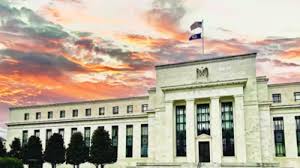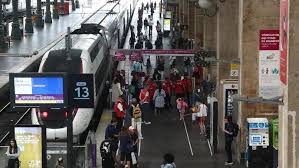The U.S. economy has once again showcased its strength by creating far more jobs than anticipated in May, accompanied by a reacceleration in annual wage growth. This robust performance of the labor market suggests a reduced likelihood of the Federal Reserve initiating rate cuts in September. The latest employment report from the Labor Department also revealed a slight uptick in the unemployment rate to 4.0% from April’s 3.9%, marking a shift from a historic low that had persisted for 27 consecutive months.
Breaking Down the Employment Report
Job Creation Surges in May
The Labor Department’s report indicates that the U.S. economy added significantly more jobs in May than economists had predicted. This surge in employment highlights the resilience of the labor market amidst various economic challenges.
Wage Growth Reaccelerates
Annual wage growth saw a notable uptick in May, further underscoring the strength of the labor market. This increase in wages is a positive sign for workers, suggesting that employers are competing more fiercely to attract and retain talent.
Unemployment Rate Ticks Up
A Symbolic Increase
The unemployment rate edged up to 4.0% in May from April’s 3.9%. While this increase may seem minor, it breaks a long-standing period of exceptionally low unemployment rates, which had held steady below 4.0% for 27 months.
Interpreting the Increase
The slight rise in the unemployment rate can be interpreted in multiple ways. It may reflect more people entering the labor force, encouraged by the strong job market, or it could indicate slight cooling in job creation pace as the economy adjusts to various pressures.
Implications for the Federal Reserve
Rate Cuts Less Likely
The strong job creation and rising wage growth reduce the likelihood that the Federal Reserve will implement rate cuts in September. The Fed typically lowers rates to stimulate economic activity during downturns, but the current data suggests a resilient economy that may not require such intervention.
Economic Stability
The robust labor market points to overall economic stability, giving the Federal Reserve more leeway to focus on other aspects of monetary policy without the immediate need to cut rates.
Factors Behind Job Growth
Industry Contributions
Various industries contributed to the job growth seen in May. Sectors such as healthcare, leisure and hospitality, and professional services were particularly strong, reflecting ongoing recovery and expansion in these areas.
Economic Policies
Recent economic policies and government support measures have played a role in bolstering the labor market. Stimulus packages, infrastructure investments, and support for small businesses have all contributed to job creation.
Challenges and Concerns
Inflation Pressures
Despite the positive job numbers, inflation remains a concern. Rising wages can contribute to higher prices, which may complicate the economic landscape and influence future Federal Reserve decisions.
Global Economic Uncertainty
Global economic uncertainties, including trade tensions and geopolitical conflicts, continue to pose risks. These factors can affect business confidence and investment, potentially impacting job growth in the future.
The Future of the Labor Market
Sustaining Growth
To sustain job growth, it is crucial for policymakers to address underlying challenges such as skills gaps, labor force participation rates, and economic inequalities. Continued investment in education, training, and workforce development is essential.
Adapting to Change
The labor market must also adapt to changing economic conditions and technological advancements. This includes embracing new technologies, supporting innovation, and ensuring that workers have the skills needed for the jobs of the future.
The U.S. economy’s impressive job creation in May and the reacceleration of wage growth highlight the resilience of the labor market. While the slight increase in the unemployment rate marks a departure from historic lows, the overall picture remains positive. As the Federal Reserve monitors these developments, the focus will likely remain on maintaining economic stability and addressing potential inflationary pressures. The future of the labor market will depend on continued policy support, investment in workforce development, and adaptability to changing economic conditions.








